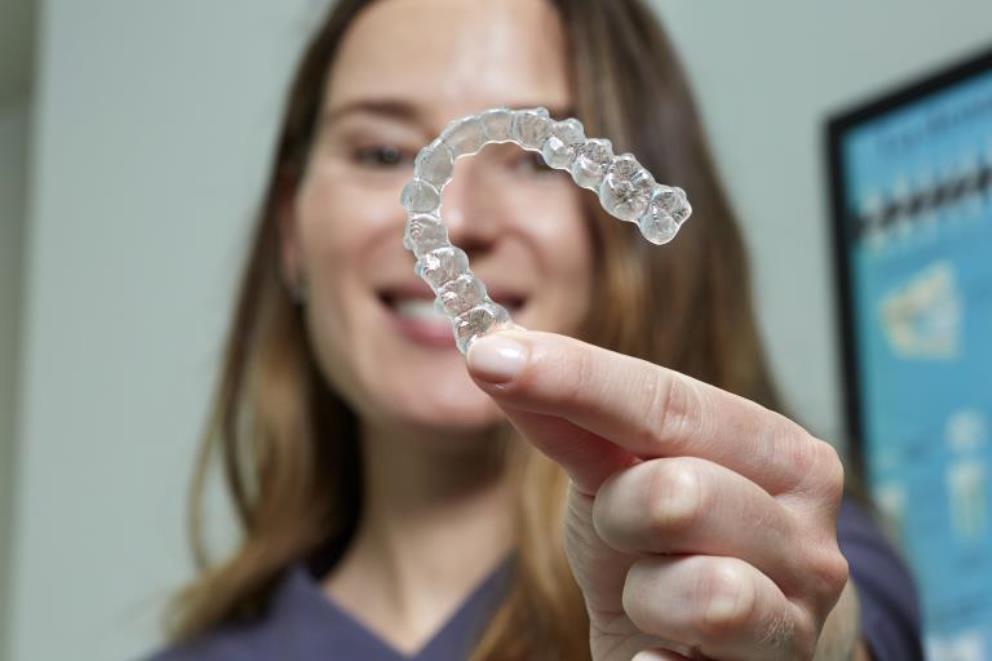Main Differences Between Braces and Aligners
Knowing them will help us choose which of the two systems best fits our needs, budget, and lifestyle.
01/07/2024

Tags Consulta todas las novedades con la etiqueta Ortodoncia
Today, we are here to talk about a topic that, although it may seem obvious, generates quite a few doubts among our patients: the difference between braces and aligners within Orthodontics and Dentomaxillary Orthopedics. Knowing these differences will help us choose which of the two systems best fits our needs, budget, and lifestyle.
Design and Appearance:
Braces: Braces can be metal or ceramic and are cemented onto the teeth in such a way that they cannot be removed during treatment. All of them are connected by a metal arch and are therefore quite visible.
Aligners: Aligners are custom-made transparent plastic trays that fit over the patient's teeth. They are practically invisible and can and should be removed to eat anything and drink certain sugary or teeth-staining beverages, making them a removable and more aesthetic option.
Comfort:
Braces: Braces are more likely to create sores due to the friction with the mucous membranes. The excess wire as teeth align can poke the cheeks, and the adjustments made at each check-up can cause tooth discomfort for the first few days.
Aligners: Aligners, fitting smoothly over the teeth, tend to be more comfortable and cause fewer emergencies. Changing aligners may cause discomfort for the first day or two, but both the duration and the pain are much less.
Hygiene and Maintenance:
Braces: Braces are harder to clean as food and plaque can get trapped in the metal components. Additionally, they do not allow the use of dental floss, making meticulous oral hygiene crucial to prevent cavities and periodontal disease.
Aligners: Being removable, aligners allow for normal brushing and flossing.
Diet:
Braces: Hard, sticky, or crunchy foods that can dislodge the braces should be avoided, such as olives with pits, hard bread sandwiches, and whole fruits.
Aligners: There are no dietary restrictions since they must be removed to eat and drink anything other than water.
Frequency of Visits to the Dentist:
Braces: Regular visits to the orthodontist every 4-6 weeks are required for adjustments and check-ups.
Aligners: Visits can be every 6-8 weeks and can be tailored to the specific case and lifestyle of the patient, who receives a set of aligners to change every 7 days, which can vary if the patient has a trip, lives abroad, or goes on a long vacation.
Treatment Plan Design:
Braces: Although there is an established treatment path set by the orthodontist, all teeth move at the same time and the professional cannot choose which teeth to move and to what extent.
Aligners: In the case of aligners, the treatment plan is digitally designed, allowing the orthodontist to decide which teeth to move and which not to, and by how much. One of the main advantages of this is that the patient can visualize the final result of their treatment before starting.
Cost:
Braces: Generally, metal braces are more economical than aligners.
Aligners: Tend to be more expensive due to the technology and customization involved in their manufacturing.
In conclusion, the differences between both systems are quite evident, and the choice between one or the other will depend on various factors, including aesthetic preferences, comfort, hygiene, and cost.
What is clear is that, in the right hands, both are effective in successfully treating all types of malocclusions.
Discover which option is best for you! Come visit us and start your journey towards a perfect smile today!
